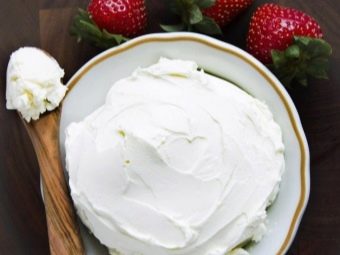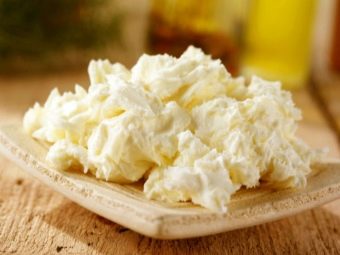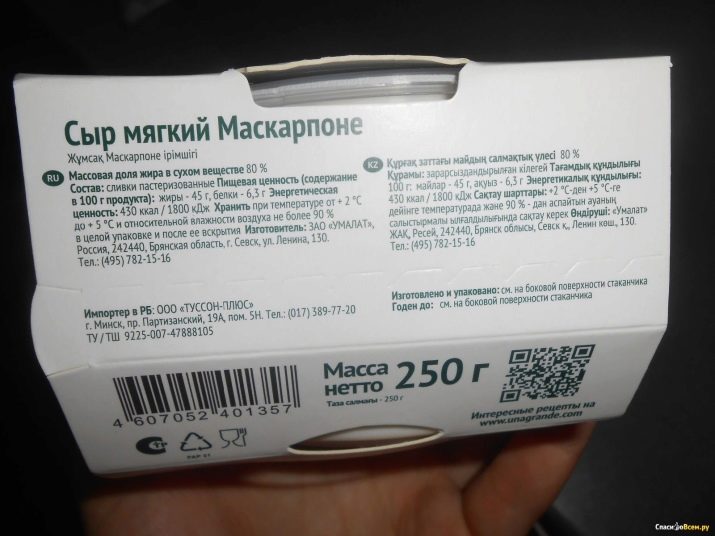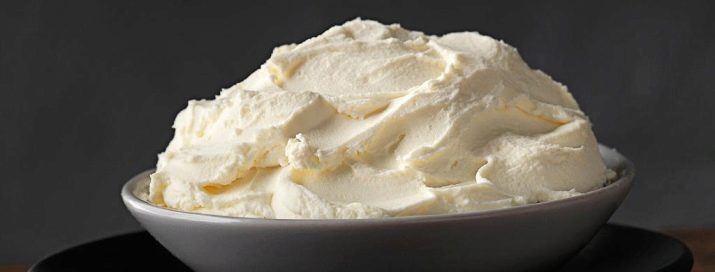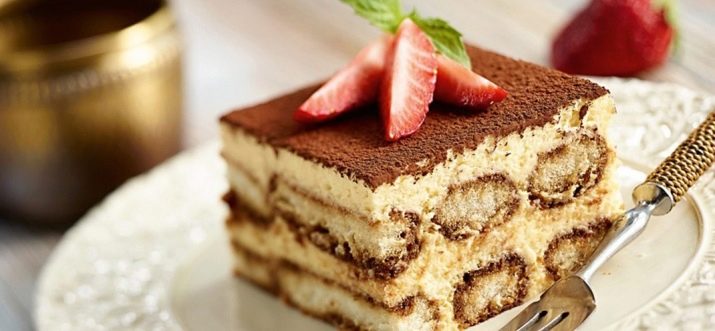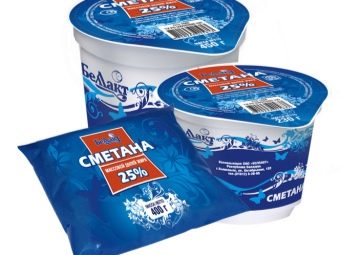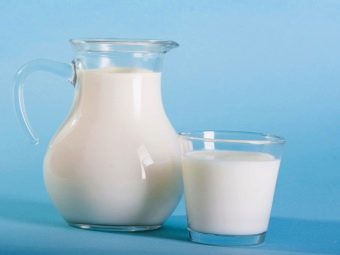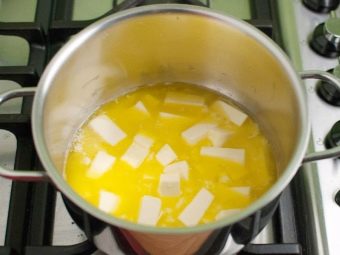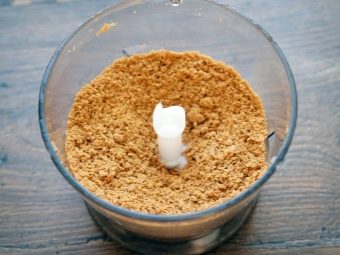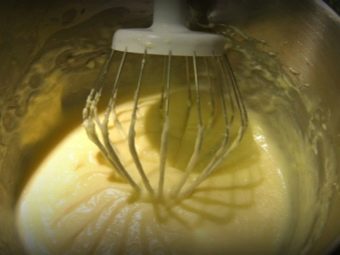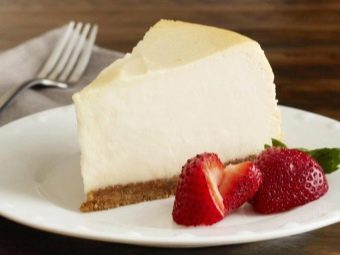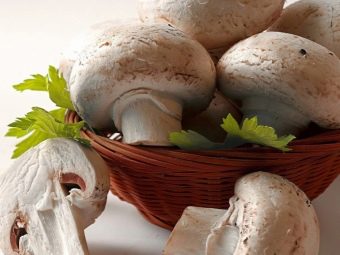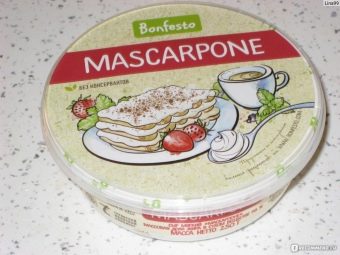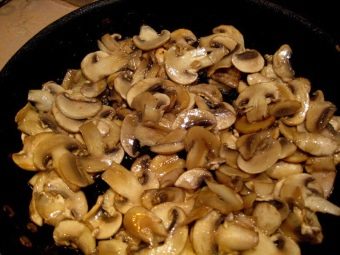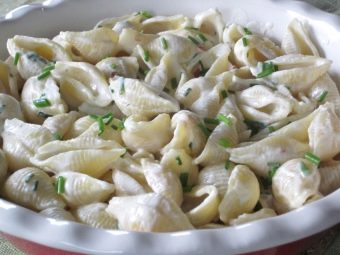Mascarpone cheese: what is it and what is it eaten with?
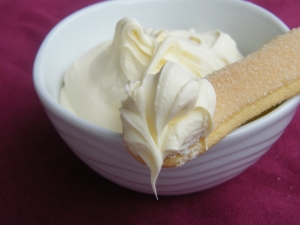
Most often, when the word “cheese” appears in the head, a yellow triangular piece wrapped in film and having small holes inside. This product is perfectly melted, cut and grated. However, there are varieties that resemble more cream than the usual cheese. One of these products is Mascarpone cheese, which first appeared in Italy in the Lombardy region.
Italians are confident that the history of its occurrence is associated with pure coincidence. For the preparation of the famous solid parmesan, it was necessary to have settled milk, on which cream was collected from above. This cream was considered unsuitable for cooking hard cheeses and quickly deteriorated, so they were allowed to be assembled as an apprentice in order to spread it on ordinary flat cakes. Thus, the first Italian cream cheese appeared. And the name comes from the Lombardian word "mascarpa", which means simply "cottage cheese".
Characteristic
Mascarpone is significantly different from the usual soft cottage cheese due to the fact that it is not made using whey. The difference between cream and curd products is obvious: this cheese is more like a thick whipped mass, smooth and homogeneous, than a granular curd mass. It also tastes different from the usual soft cheeses, which are mostly sourish and salty. Mascarpone is most similar to cream cheese "Philadelphia", which is used to make the famous roll of the same name. The production of soft cheese both in industrial and at home is the same and does not represent a great deal of difficulty.
- Tartaric or citric acid is mixed with a lot of fatty fresh cream taken from milk. The traditional recipe used buffalo milk, but today almost all cream cheese is made from regular cow's milk.
- The resulting mass is put on the fire and slowly heats up. No need to bring it to a boiling point, otherwise the cream may curl and the cheese will not work the way it should be.
- Boiled until ready mass is placed in a cloth or gauze and hung for some time. This will drain the excess fluid and make the structure of the finished product even more delicate and silky. Mascarpone should look like a very dense oil cream, not to roll lumps, but not spread over the surface.
Composition and calorie
Mascarpone, made from fresh cream, contains many beneficial substances. This lactic acid, and calcium, and protein - all that is contained in large quantities in ordinary fresh milk. Heat treatment at low temperatures and the absence of saline solution make it possible to keep almost all vitamins and minerals in its composition:
- most of the B vitamins;
- vitamins A, K, C, D and PP;
- magnesium;
- phosphorus;
- sodium;
- potassium;
- zinc.
Calorie and BJU product depend on the initial fat content and quality of the cream. The fat content of this Mascarpone is not less than 80%, and 100 g of cream delicacy contains as much as 430 kcal, 6.2 g of protein, 5.8 g of carbohydrates and 45 g of fat. Since it is practically not used in its pure form, but is mixed with other ingredients, it is sold in small plastic containers weighing from 100 to 300 grams.
Benefit
Despite the high fat content and calorie content of soft cheese, both cooks and doctors recommend occasionally eating it. This is due to the many beneficial properties of high-quality Mascarpone.
- Due to the quick and gentle preparation, practically all the vitamins and useful microelements remain in the composition of the finished product, and therefore, the dessert made with such cheese. Vitamins of certain groups are useful in certain diseases. Vitamins of group B are involved in cell growth and metabolic processes of the body. Nicotinic acid (PP) regulates human fat metabolism, splitting carbohydrates and turning them into energy.And vitamins A, C and D are responsible for the immunity and condition of the skin, hair and nails.
- Antioxidants contained in cream cheese protect and strengthen the body, slowing down cell aging. Recent studies have shown their benefits in combating even cancer.
- The trace elements in the form of magnesium, zinc and phosphorus help to cope with stress, calm the nervous system and help with depression. A gentle creamy taste of Mascarpone, melting on the tongue, brings real pleasure and improves mood.
- Included in the potassium and calcium are necessary for people with diseases of the musculoskeletal system, with fractures and injuries of the joints and bones.
Harm
Unfortunately, not all people can include this delicate cream product in their menu. Its high fat content and high calorie content make Mascarpone a forbidden delicacy for people suffering from alimentary obesity and sticking to a certain diet.
It is not recommended for use by diabetics, people with stomach ulcers and gastrointestinal diseases. If you have problems with liver and lactose intolerance, you should generally abandon any cheeses in your diet, no matter how tasty and healthy they are. Cheese desserts can eat children, ranging from two years old and older, but you should not include such cheese in baby food, it is better to limit yourself to ordinary cottage cheese.
Terms and conditions of storage
Mascarpone is a perishable product. After opening the sealed package, it can be stored for no more than 2-3 days in a refrigerator at a temperature of 5 to 10 degrees. In no case can not leave it on the table or in a warm box - so the cheese will sour in a couple of hours. Unlike regular dense cheese, which can be frozen, a creamy creamy product cannot be stored in the freezer. From low temperatures, ice crystals are formed in its structure, which, when defrosted, turn into water and make the cheese liquid and tasteless.
It is better not to buy such a capricious product in bulk and in advance, if in the nearest stores you can easily buy it. Those who do not have access to a fresh product, it is better to abandon its use or replace it with analogues. For example, Ricotta cream cheese, soft Philadelphia or Almette curd.
According to reviews of many housewives, they are almost indistinguishable from homemade Mascarpone in many desserts.
Cooking Application
In Italy, Mascarpone is most often combined with other cheeses to give it a brighter taste. Most often it is Gorgonzola, which includes in its composition a special blue mold. A mixture of cheese served as a snack to the wine, put on bruschetta or cookies. In the homeland of Mascarpone, in Lombardy, it is mixed with chopped anchovies and greens, olives and hot spices are added. Various soups, risotto and mashed potatoes are made with it.
However, most often a creamy product is used in the preparation of desserts. These are the famous sweets called “cheesecake” or “tiramisu”, various creams for eclairs and cakes. It is mixed with liqueurs and syrup, berries and fruits, chocolate and caramel are added to it. Such a widespread use is due to one of its features: at high temperatures, soft cheese does not change its shape, unlike solid cheese; therefore, it is ideal for any baking.
Unfortunately, it is not always possible to purchase a quality product at an affordable price, and in some cities it is generally difficult to find this foreign delicacy. For its preparation requires high-quality fat cream (at least 30% fat), which is also quite difficult to find in a regular store. Therefore, many housewives have learned to make an analogue of homemade Mascarpone from ordinary fat sour cream. This will require:
- 1 l of sour cream with a fat content of 25%;
- 300 ml of fresh milk of any fat content;
- 2 tsp lemon juice, it is better if it is freshly squeezed.
Sour cream is combined with milk and stirred until a homogeneous mass. The resulting mixture is poured into a saucepan with a thick bottom and put on a slow fire, stirring constantly.As soon as the temperature reaches 70-75 degrees and the first bubbles appear in the milk-cream mixture, it is necessary to pour lemon juice into it and mix everything. The fire is turned off, and the saucepan is tightly covered with a lid and left to cool for half an hour. After the specified time, the mass should be folded back onto a sieve, covered with gauze in two layers, and allowed to drain out. Ready cheese put in the fridge and let it brew for several hours, and preferably the whole night.
If small lumps are felt in the cheese, it can be smashed with a blender at high speed.
Recipes
The best way to use a purchased or homemade Mascarpone would be to make the famous New York cheesecake. This will require:
- 300 g of any shortbread;
- 100 g of melted butter;
- 600 g Mascarpone;
- 150 grams of sugar;
- 3 chicken eggs;
- 200 ml of heavy cream 25-35%.
For baking, you need a detachable form with a diameter of 20-24 cm and a height of at least 6 cm. All ingredients must be at room temperature and butter melted, so you need to remove them from the refrigerator beforehand. Start cooking puff cheesecake from the base. For this, shortbread is passed through a meat grinder, crumbled with a blender or broken with an ordinary rolling pin. The resulting sand crumb combined with melted butter and placed on the bottom of the form, covered with parchment. The laid base must be carefully tamped down with your hands or with the help of any glass tumbler.
You can make the sides of such a plastic mass, and you can restrict yourself only to the base. The packed form is placed in the oven with a temperature of 200 degrees for 10 minutes, so that the cookie “grabs” and becomes like a whole cake.
Cream cheese is mixed with sugar until smooth, it is best to do this with a kitchen machine or mixer, turned on at the minimum speed. Chicken eggs are added to the mass one by one, after each cream it is necessary to mix well with a spatula. After the eggs are added rich cream, and the mass is mixed again. You need to try not to beat, but only stir the cheese cream, otherwise there will be small bubbles in the finished cake. The finished cream is poured into the form over the cake and put in the oven for 10 minutes at a temperature of 200 degrees. After the specified time, the temperature must be reduced to 105-110 degrees and bake the cheesecake for another hour and a half.
Do not immediately remove the finished cake from the oven, otherwise it will quickly settle. It is best to wait 40 minutes until it cools, after which another 40 minutes to allow the form to stand on the table before putting it in the refrigerator. To separate the cheesecake from the mold, you need to go with a sharp knife along the inner edge of the mold and gently open it.
The dish is served a la carte on a large flat plate, you can pour a piece of chocolate on top, put a scoop of ice cream or decorate with any fruits and berries.
In addition to sweet desserts, you can surprise and please guests and loved ones with preparing a hot dish with soft cream cheese. For example, Mascarpone goes well with any pasta and mushrooms. For cooking you will need:
- 5 sockets tagliatelle (you can use regular spaghetti);
- 200 g fresh champignons;
- 150 g of purchased or homemade Mascarpone;
- 1 bunch of spinach;
- 50 g of any hard cheese;
- salt, pepper to taste;
- vegetable oil (olive oil is best).
For the sauce, you need to peel the champignons peeled and cut into flat pieces and lightly fry in olive oil for 5-10 minutes. Add chopped spinach and 1 tablespoon of water to the mushrooms, then put the mixture out for another 5-10 minutes. Add mascarpone to the spinach and mushroom and cover with a lid. After the cheese, mixing with the juice of vegetables and mushrooms, turns into a liquid creamy sauce, turn off the heat, remove the pan from the stove. Tagliatelle boil in a deep pan according to the instructions on the package and put in deep plates. Top with pasta pour the resulting thick sauce and sprinkle with hard cheese.
With Mascarpone you can make a lot of different snacks, stuff them with pancakes or eclairs, make cheese cream for a sweet cake based on it. Everything is limited only by the imagination of the culinary specialist who uses it. You can purchase it at the store, order delivery, or cook it yourself. The main thing to remember is that fresh cheese has a white color, sour creamy taste and milk flavor.
The recipe for making Mascarpone cheese, see below.


